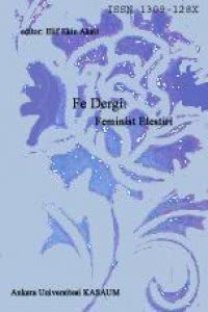Contribution of Geographical Research Methods to the Study of Gender Relations
gender, method, neighbourhood
___
- Bazeley, Pat and Lynn Kemp. “Mosaics, Triangles, and DNA: Metaphors for Integrated Analysis in Mixed Methods Research” Journal of Mixed Methods Research 6 (2012): 55-72.
- Brewer, John D. Ethnography. (Buckingham: Open University Press, 2000).
- Carpiano, Richard. M. “Come take a walk with me: The ‘‘Go-Along’’ interview as a novel method for studying the implications of place for health and well-being” Health & Place 15 (2008): 263– 272.
- Chick, Garry. “Culture as a Variable in the Study of Leisure” Leisure Sciences 31(3) (2009): 305-310
- Clark, Andrew and Nick Emmel. “Using walking interviews” Realities 13 (2010):1-6.
- De Certeau, Michel, Girard, Luce. and Pierre, Mayol(ed.). The Practice of Everyday Life, Volume 2: Living and Cooking. (Translated by T. J. Tomasik. Minneapolis: University of Minnesota Press, 1988).
- Deem, Rosemary. All Work, No Play? (Milton Keynes: Open University Press, 1986).
- Demirbaş, Gökben. Women’s Leisure in Urban Turkey: A Comparative Neighbourhood Study. (PhD. Glasgow University, 2018).
- Denzin, N. K. “Triangulation 2.0.” Journal of Mixed Methods Research. 6, no. 2 (2012): 80–88.
- Dixey Rachel and Margaret Talbot. Women, Leisure and Bingo (Trinity and All Saints’ College: Indiana University, 1982).
- Ekin Erkan, Nihal. Toplumsal Cinsiyet Perspektifinden “Kentsel Eşitsizlik” (PhD. Marmara University, 2006).
- Erder, Sema. Kentsel Gerilim. [Urban Tension] (Ankara: Um: Ag Publishing, 1997).
- Evan, James and Phil, Jones. “The Walking Interview: Methodology, Mobility and Place” Applied Geography 31 (2011): 849-858.
- Flick, Uwe. “Mantras and Myths: The Disenchantment of Mixed-Methods Research and Revisiting Triangulation as a Perspective” Qualitative Inquiry 23, no.1 (2017): 46-57.
- Green, Eileen and Hebron, Sandra and Diana Woodward. Leisure and Gender: A Study of Sheffield Women’s Leisure Experiences (Sports Council and Economic and Social Research Council, 1987).
- Green, Eileen and Carrie Singleton. “Risky Bodies at Leisure: Young Women Negotiating Space and Place” Sociology, 40, no.5 (2006): 853–871.
- Kitzinger, Jenny. “Introducing Focus Groups” British Medical Journal 311 (1995): 299-302.
- Kusenbach, Margarethe. “Street Phenomenology: The Go-Along as Ethnographic Research Tool” Ethnography 4, no. 3 (2003): 455-485.
- O’Reilly, Karen. Key Concepts in Ethnography (London: Sage Publications, 2009).
- Reinharz, S. Feminist Methods in Social Research (Oxford: Oxford University Press, 1992).
- Skeggs, Beverley. “Matter out of Place: Visibility and Sexualities in Leisure Spaces” Leisure Studies 18 (1999): 213– 232.
- Watson, Beccy and Aarti Ratna. “Bollywood in the Park: Thinking Intersectionally About Public Leisure Space”. Leisure/Loisir. 35, no.1 (2011): 71-86.
- Wearing, Betsy. Leisure and Feminist Theory (London: Sage Publication, 1998).
- Wheeldon, Johannes. “Is A Picture Worth A Thousand Words? Using Mind Maps to Facilitate Participant Recall in Qualitative Research” The Qualitative Report 16, no.2 (2011): 509-522.
- Wheeldon, Johannes and Ahlberg, Mauri, K. Mauri K. Visualizing Social Science Research: Maps, Methods and Meaning (Thousand Oaks: Sage Publication, 2012).
- Willis, Paul. (1980). “Notes on Method” Culture, Media and Language: Working Papers in Cultural Studies, 1972-79 ed. Stuart Hall, Dorothy Hobson, Andrew Lowe and Paul Willis (London: Routledge, 1980), 76-84.
- Zahle, Julie. “Practical Knowledge and Participant Observation” Inquiry: An Interdisciplinary Journal of Philosophy 55, no.1 (2012): 50-65.
- ISSN: 1309-128X
- Yayın Aralığı: 2
- Başlangıç: 2008
- Yayıncı: Ankara Üniversitesi KASAUM
Türkiye futbolunda kadın: “İş”i olmayan ve olmaması gereken yerde
Kadın Psikolojik Güç Ölçeği: Ölçek Geliştirme Çalışması
The Awakening of the Locked Up Female Body in That Scorching Season of Youth
Kilitler Altına Alınmış Kadın Bedeninin Gençliğin O Yakıcı Mevsimi’nde Uyanışı
Muzaffer Derya NAZLIPINAR SUBAŞI
Kadın Bedeni ve Biyo-İktidar/Biyo-Politika Söylem Düzeni
Benzeşen/Farkılaşan Çerçeveler: Türkiye’deki İslamcı Kadın STK’lar Örneği
Asuman Özgür KEYSAN, Zelal ÖZDEMİR
Contribution of Geographical Research Methods to the Study of Gender Relations
Süryaniliğin Kadınların Aile Yaşamına Kültürel Yansıması: Midyat Örneği
Converging/Diverging Frames: A Case of Islamist Women’s CSOs in Turkey
Zelal ÖZDEMİR, Asuman ÖZGÜR KEYSAN
